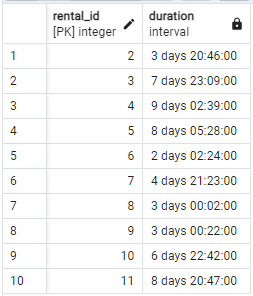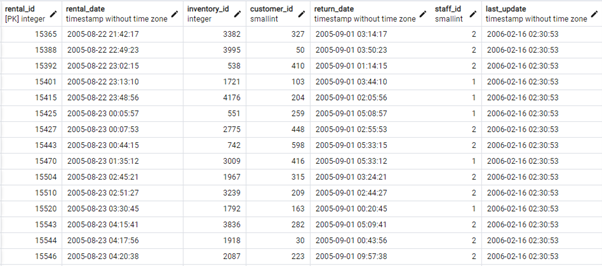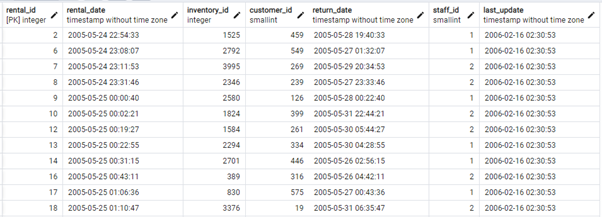Date comparisons allow us to extract specific data ranges, filter records based on a given time interval, perform the time-difference-based calculations, and more.
In this tutorial, we will explore the several approaches to comparing dates in PostgreSQL.
Requirements:
In this tutorial, we assume that you have the following:
- Installed PostgreSQL server on your system
- A sample database that you can use. For this post, we use the pagila database for demonstration purposes.
Method 1: Direct Date Comparison
PostgreSQL allows us to compare the dates using a straightforward method by specifying the date as a string literal.
An example is as follows:
WHERE return_date > '2005-05-28' limit 10;
In this case, the previous query should return all the records where the value of the rental_date column is greater than the specified value.
The resulting output is as follows:
Method 2: Date Functions
We can also use PostgreSQL’s built-in date functions for more sophisticated date comparisons.
Consider the following example:
FROM rental;
The given query retrieves the rental ID and the duration of each rental from a table named “rental” using the age function.
Method 3: PostgreSQL Extract Function
Another method that we can use to perform the date comparison in PostgreSQL is the extract() function. This function allows us to get a specific part of a date such as a day, month, or year.
For example, to fetch all the rows where the return date is September, we can use the query as follows:
WHERE EXTRACT(MONTH FROM return_date) = 9;
Output:
Interval Comparison
PostgreSQL provides us with the interval type that we can use to compare the date values as demonstrated in the following example:
WHERE rental_date > return_date - INTERVAL '3 month';
Output:
Date Trunc
We can also use the DATE_TRUNC() function to truncate the dates to a certain precision. An example demonstration is as follows:
WHERE DATE_TRUNC('month', rental_date) = DATE_TRUNC('month', return_date);
Output:
There you have it!
Conclusion
We covered the various methods and techniques that we can use to perform the date comparisons in the PostgreSQL database.





